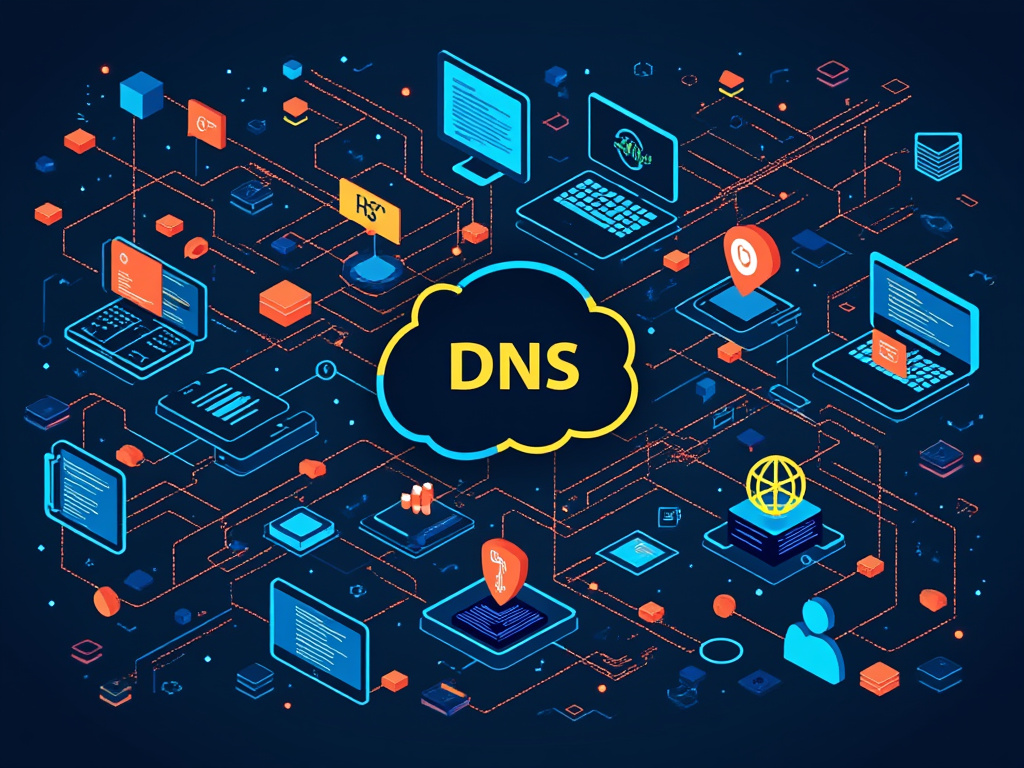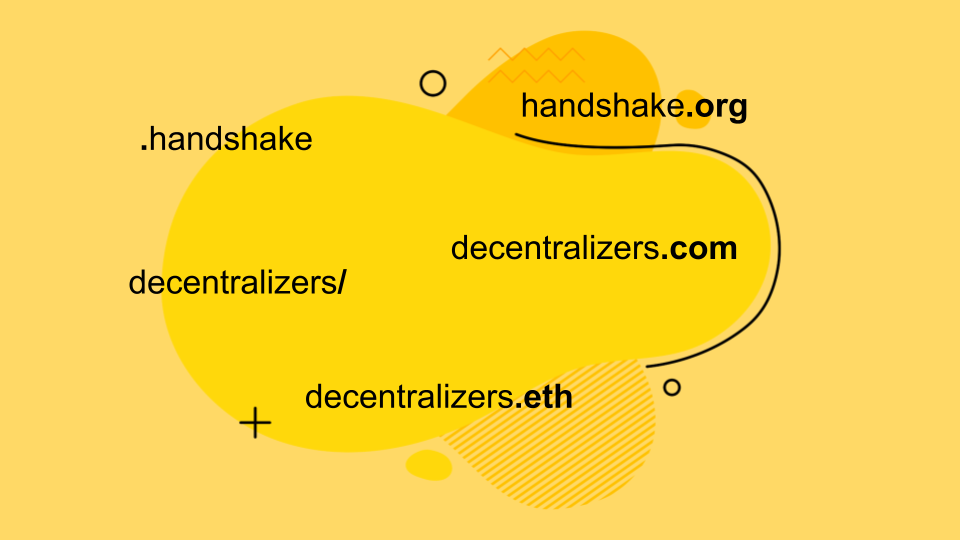7 min to read
Handshake vs. DNS: The Open-Source Revolution in Domain Name Systems
Leveraging Blockchain for a Secure and Decentralized Internet Infrastructure

Comparative Analysis of Handshake Protocol and DNS: Advantages of Open-Source Systems
Abstract
The Domain Name System (DNS) has long been the backbone of internet navigation, translating human-readable domain names into IP addresses. However, the DNS infrastructure has been increasingly criticized for its centralized nature, security vulnerabilities, and susceptibility to censorship. Handshake, an emerging alternative, promises a decentralized, open-source approach to domain name resolution. This article presents a technical comparison of Handshake and DNS, emphasizing the inherent advantages of Handshake as an open-source project. By drawing parallels between open-source and closed-source ecosystems, such as Linux vs. Windows and Android vs. Apple, this article demonstrates the superiority of Handshake in terms of security, transparency, and innovation.
1. Introduction
The DNS protocol, designed in the 1980s, was built for a much smaller internet ecosystem. It operates in a hierarchical, centralized manner, where a few entities control the root zones and top-level domains (TLDs). This centralization leads to several vulnerabilities, including single points of failure, susceptibility to Distributed Denial of Service (DDoS) attacks, and government or corporate censorship. In contrast, the Handshake protocol, launched in 2020, leverages blockchain technology to create a decentralized and more secure naming system.
This article argues that Handshake’s open-source nature offers significant advantages over the traditional DNS system. The comparison of Linux vs. Windows and Android vs. Apple serves as a framework to demonstrate the benefits of open-source projects in terms of security, transparency, and community-driven innovation.
2. Overview of DNS and Handshake Protocols
2.1 DNS Protocol
The DNS protocol is a hierarchical, distributed naming system that translates domain names to IP addresses, enabling users to access websites using human-readable names. The protocol relies on a network of DNS servers, including authoritative name servers, recursive resolvers, and root name servers. Despite its effectiveness, DNS suffers from several critical issues:
- Centralization: The DNS root zone is managed by a small group of organizations, including ICANN and Verisign, which introduces central points of control and failure.
- Security Vulnerabilities: DNS is vulnerable to cache poisoning, man-in-the-middle attacks, and DDoS attacks, which can disrupt internet services.
- Censorship: Governments and ISPs can block or redirect DNS queries to censor content.
2.2 Handshake Protocol
Handshake is a decentralized naming protocol built on blockchain technology. It replaces the traditional DNS hierarchy with a peer-to-peer system where domain ownership is secured through cryptographic keys. Handshake introduces several innovations:
- Decentralization: The root zone is replaced by a distributed ledger, eliminating central points of control.
- Enhanced Security: DNSSEC-like cryptographic proofs are built into the protocol, providing strong security guarantees.
- Censorship Resistance: Handshake’s decentralized nature makes it resistant to censorship, as no single entity can control the entire system.
3. The Advantages of Open-Source Systems: A Comparative Framework
The superiority of open-source systems in terms of security, transparency, and innovation can be observed in several technology domains. To draw a parallel, this section compares the open-source vs. closed-source paradigms through two prominent examples: Linux vs. Windows and Android vs. Apple.
3.1 Linux vs. Windows
Linux, an open-source operating system, has become the backbone of the internet, powering the majority of web servers, cloud infrastructure, and supercomputers. Its success can be attributed to several factors:
-
Security: Linux benefits from a large community of developers who can inspect, modify, and improve the code. Vulnerabilities are often discovered and patched quickly due to the collaborative nature of the open-source community. In contrast, Windows, a closed-source system, relies on a single entity (Microsoft) for updates and security patches, leading to potential delays in vulnerability mitigation.
-
Transparency: Linux’s open-source nature ensures that its code is publicly accessible, allowing users to verify its integrity. In contrast, Windows users must trust Microsoft’s opaque development process, which can conceal backdoors or vulnerabilities.
-
Customization and Innovation: Linux’s modular design and open-source license encourage experimentation and customization. Users can modify the OS to suit specific needs, leading to a diverse ecosystem of Linux distributions. Windows, being proprietary, limits users’ ability to innovate or customize beyond what is permitted by Microsoft.
3.2 Android vs. Apple (iOS)
Android and iOS represent another dichotomy between open-source and closed-source ecosystems:
-
Market Share and Flexibility: Android, with its open-source roots (AOSP - Android Open Source Project), allows manufacturers to customize the OS for a wide range of devices. This flexibility has led to Android’s dominance in the global smartphone market. In contrast, Apple’s iOS, being a closed-source system, offers a more uniform experience but at the cost of flexibility and innovation outside of Apple’s control.
-
Security and Patching: While iOS is often praised for its security, Android’s open-source nature allows for more rapid identification and patching of vulnerabilities by the global developer community. However, this also introduces fragmentation, where different manufacturers might delay updates. Nonetheless, Android’s collaborative approach fosters a faster overall pace of security improvements.
-
Developer Ecosystem: Android’s open-source model has led to a vibrant ecosystem of developers who contribute to its core as well as create diverse apps and services. Apple’s tightly controlled App Store and closed-source environment limit developers to Apple’s vision and guidelines, stifling certain types of innovation.
4. Handshake vs. DNS: The Open-Source Advantage
4.1 Security
Just as Linux benefits from its open-source community for security, Handshake’s codebase is open for inspection by anyone. This transparency allows for the rapid identification and remediation of vulnerabilities. The decentralized nature of Handshake further enhances its security posture, making it resilient to common DNS-based attacks such as cache poisoning and DDoS attacks.
In contrast, DNS, being controlled by a few central authorities, is inherently more vulnerable to coordinated attacks. Although DNSSEC was introduced to address some of these vulnerabilities, its adoption has been slow, and it remains an optional feature rather than a fundamental part of the protocol.
4.2 Transparency
Handshake, like other open-source projects, offers full transparency in its operations. The entire protocol and its blockchain ledger are public, allowing anyone to audit the system. This level of transparency is crucial for trust, as users can independently verify that the system is functioning as intended without any hidden mechanisms.
DNS, on the other hand, operates behind closed doors at the root level. While most DNS operations are visible through queries, the critical decision-making processes regarding TLD management, policy changes, and root zone updates are opaque and controlled by a small group of organizations.
4.3 Innovation and Community-Driven Development
The open-source nature of Handshake fosters a community-driven approach to development. Developers from around the world can contribute to the protocol, propose improvements, and create new applications that leverage Handshake’s decentralized naming system. This collaborative environment accelerates innovation and ensures that the protocol evolves to meet the needs of its users.
In contrast, DNS development is slow and bureaucratic, often hampered by the need for consensus among a small group of stakeholders. While DNS has seen improvements over the years, such as the introduction of DNSSEC, these changes have been incremental and often delayed by the challenges of coordinating across a global, centralized infrastructure.
5. Conclusion
The Handshake protocol represents a significant advancement over the traditional DNS system, particularly when viewed through the lens of open-source development. By drawing parallels with other open-source vs. closed-source ecosystems, such as Linux vs. Windows and Android vs. Apple, this post highlights the inherent advantages of Handshake in terms of security, transparency, and innovation.
As the internet continues to evolve, the need for a more secure, decentralized, and open naming system becomes increasingly apparent. Handshake’s approach addresses many of the fundamental flaws of DNS, positioning it as a superior alternative for the future of internet infrastructure. The success of open-source projects in other domains strongly suggests that Handshake, with its community-driven development model, is better equipped to adapt, innovate, and secure the internet’s naming system for the long term.
6. References
[1] Mockapetris, P. (1987). Domain names - concepts and facilities. RFC 1034. Internet Engineering Task Force
[2] Mockapetris, P. (1987). Domain names - implementation and specification. RFC 1035. Internet Engineering Task Force
[3] Handshake Protocol Whitepaper. (2020). Handshake Developers
[4] Ghemawat, S., Gobioff, H., & Leung, S.-T. (2003). The Google file system. ACM SIGOPS Operating Systems Review, 37(5), 29-43
[5] Anderson, R. (2001). Security Engineering: A Guide to Building Dependable Distributed Systems. John Wiley & Sons



Comments